The Common Eider: a Bird of Uncommon Resilience
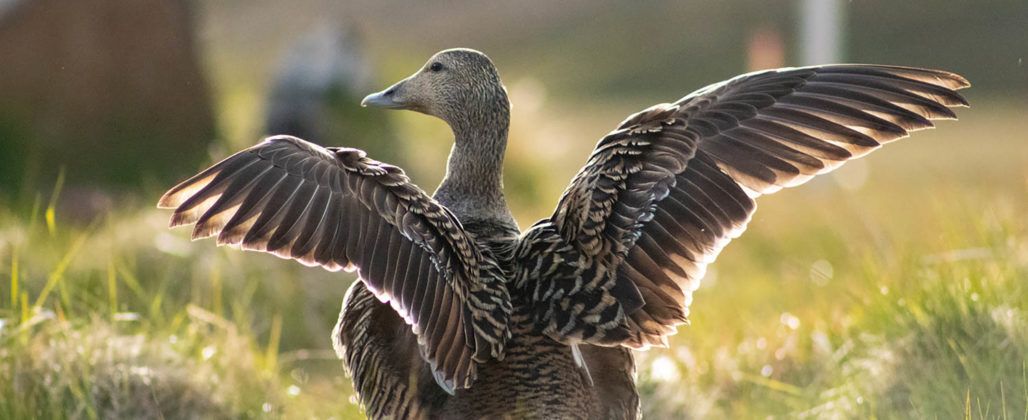
The common eider. It’s a bird that, throughout history, has captivated humanity - from Viking settlers through to the world’s royalty and elite - with desire for its’ precious, luxury eiderdown.
In fact, the eider duck’s scientific name, Somateria Mollissima, even means ‘very soft wool body’.
But there are more reasons to be impressed by the eider duck than how well its’ down can warm our beds. As a business, Icelandic Down relies on this down, and we’ve all been touched by these remarkably resilient, resourceful animals.
This article is our homage to the birds and their fascinating lives here in Iceland. So, what didn’t you know about the eider duck?
Eider ducks spend 10 months fishing in the Arctic
They live in the Northern Hemisphere; Iceland, Norway, Greenland and Canada. They spend the majority of the year in pairs, where the male protects the female from the advances of ambitious would-be partners. Eider ducks feed on a vast variety of fish and invertebrates including, but not limited to: small snails, clams, crabs, starfish, and sea urchins. They can dive up to 65 feet in their search for food — and swallow fish and crustaceans whole!
Their powerfully-insulating down is the lifeline that helps them survive winters in the Arctic ocean, where water temperatures reach freezing point. And when they return to land, they line their nests with the life-saving material to incubate the next generation.
The common eider is the largest duck species in the Northern Hemisphere, and has far more in common with seabirds like penguins, gannets, and cormorants than ducks. They can dive underwater far better than they can fly. Interesting fact; like seabirds, they even have a special gland so they can process and drink salt water!
Icelandic farmers - an unlikely symbiotic relationship
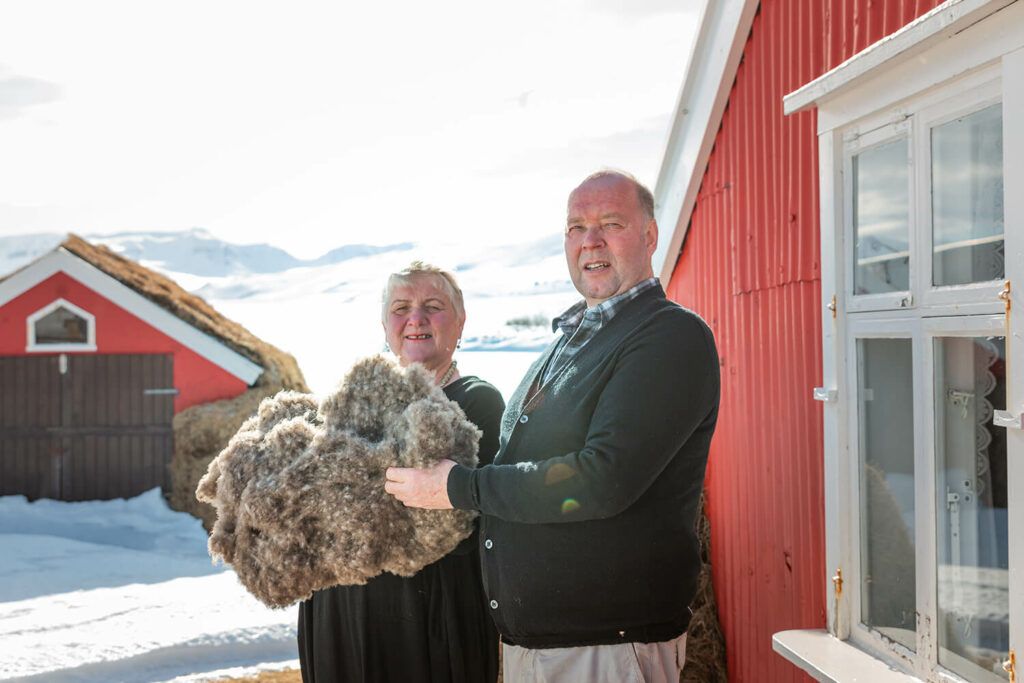
Rocky shorelines and coastal lagoons form the eider duck’s natural nesting habitat, where they’re vulnerable to predators like minks, foxes, and seagulls. Combined with human hunting activities, the eider duck was pushed to the brink of extinction in the 19th century.
In Iceland, we have a special relationship with the eider duck. If you walk around an eider farm, you’d be more likely to compare the eider duck to domesticated cats than, say, farm poultry like chickens. You’d see a traditional farmstead littered with dozens of large, furry nests - under doorways, in old tires; even on the roof! The eider ducks have become used to the presence of humans; in fact, they seem to quite like it.
Our relationship with eider ducks goes back over one thousand years, when Norse settlers prized their down for surviving the winters. Now, farmers build special sanctuaries to encourage the birds to nest. Here, they’re also safe from their natural predators; the farmers keep a watchful eye. And they’re safe from humans, too. In fact, it’s been illegal to hunt eider ducks in Iceland since 1847. Global eider duck populations have quickly grown since then.
In exchange for this safe sanctuary, eider ducks leave behind their prized eiderdown when they abandon their nests, which farmers painstakingly collect by hand for processing and production. Today, Iceland provides roughly 80% of the world’s eiderdown.
Female eiders sacrifice everything for their young
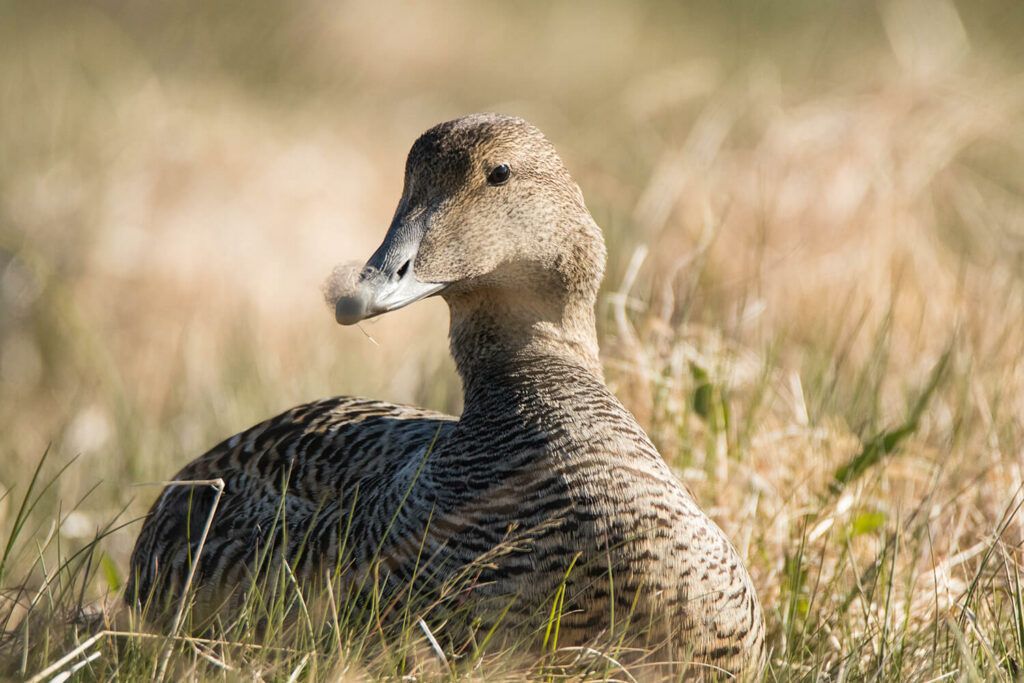
When the birds arrive to nest in May and June, they lay and incubate 3-6 large eggs for a month. If she isn’t fat or healthy enough to incubate her own eggs, she’ll lay her eggs in the nest of another female.
She sits on her nest 90-95% of the time, and she completely stops eating. In fact, she loses one third of her total bodyweight!
The remarkable sacrifice she makes — her warm, insulating down and the risk to her life — is easy, from a human perspective, to see as admirable.
Female eider ducks leave the nest a few hours after her eggs hatch, ducklings in tow. Together, they head for the shore, where the tiny, handful-sized ducklings feed on small crabs and crustaceans.
In most cases, other female ducks adopt groups of ducklings and guide them as they grow to be able to fend for themselves. We affectionately call these females aunts, and their groups sometimes reach numbers of up to one hundred!
Once they’ve fledged (developed feathers for flying), their mother leaves them and heads out to sea for another long ten months of mating, fishing, and surviving.
Their innately social nature and ability to adapt (especially to human presence) has helped eider ducks survive one of the world’s harshest, most inhospitable environments.
What does the future hold for the common eider?
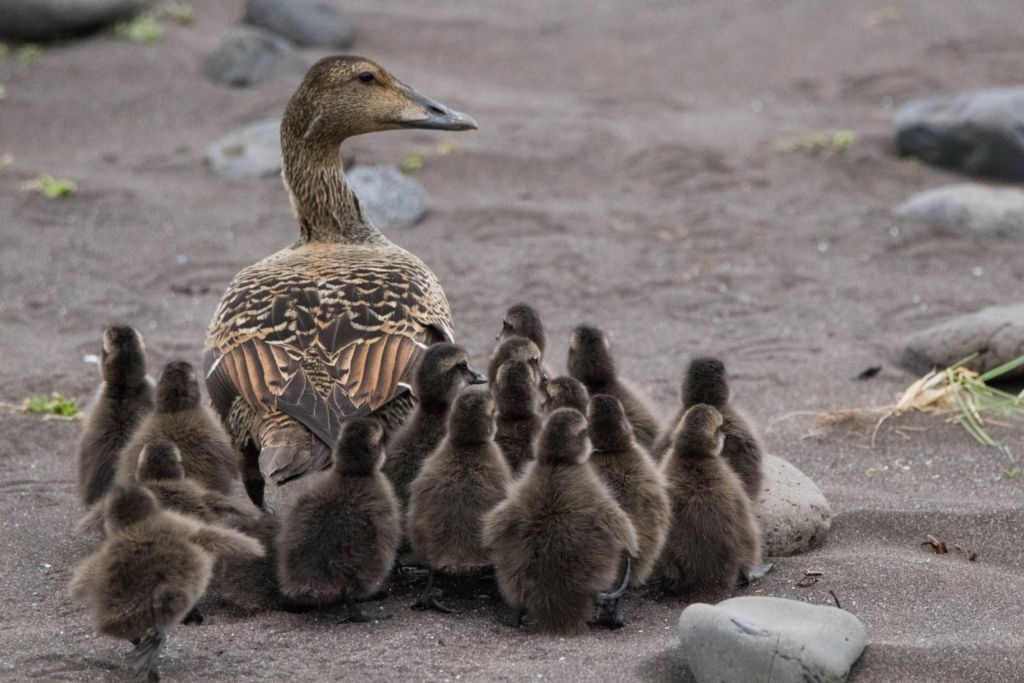
The eider duck — and the traditional practices of eiderdown farming — are under threat from overfishing, pollution, and habitat destruction. The species is listed as ‘near threatened’, with declining populations in Europe. Climate change and rising sea temperatures could significantly shift the species’ breeding range.
But we believe that, with human intervention, the eider ducks can be protected and their populations kept steady. At Icelandic Down, we’re passionate about providing the birds with safe refuges that they return to - year in, year out. And there are still many Icelandic farmers who continue the age-old practice of eiderduck farming.
Day in, day out, we feel blessed to work with this strange yet wonderful seabird (even if they sometimes get under our feet!).
If you’re interested in learning more about our eiderduck sanctuary, read our story.
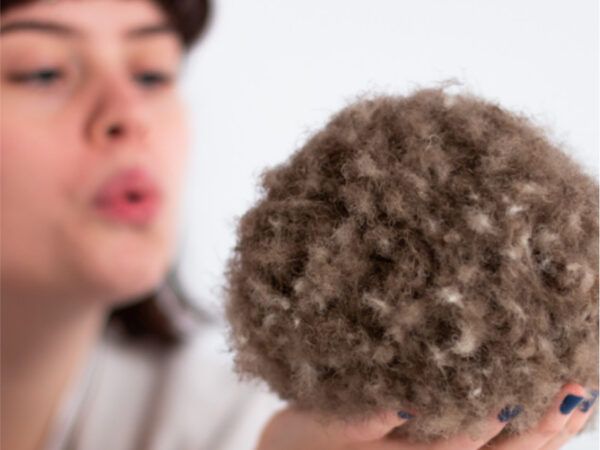
For similar stories
Join the newsletter.
Discover what makes our bedding truly special— bespoke craftsmanship, sustainable traditions, and our wonderful eiderdown.
Plus, 15% off your first order.